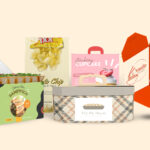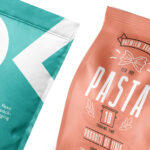In the competitive landscape of consultancy, having the right marketing materials is essential. One such tool that remains indispensable for consultants is the brochure. Whether you’re just starting or looking to expand your client base, brochures for consultants are crafted to communicate your expertise and services effectively.

Why Brochures Are Vital for Consultants
Brochures are more than just pieces of paper; they are a physical representation of your brand and the services you offer. They help in bridging the gap between a potential client and the consultant. A well-designed brochure can summarize key information about your consultancy, showcasing your expertise and credentials.
Primary Benefits of Using Brochures
- Convey Expertise: Brochures allow consultants to highlight their specialized skills and experiences succinctly.
- Tangible Marketing Tool: Unlike digital ads, brochures offer a physical touchpoint for clients to interact with.
- Versatile Distribution: They can be handed out at events, included in mailers, or left in strategic locations.
For more about what makes a great brochure, you can visit Canva’s brochure guide.
Creating Compelling Content for Brochures
When designing brochures for consultants, content plays a crucial role. The information should be clear, concise, and compelling. Starting with a strong headline, outlining your key services, and ending with a powerful call to action is a good strategy. Keep in mind that visuals complement your text; hence, high-resolution images and well-thought-out graphics are recommended.
Finding the Right Tone and Language
The tone of your brochure should reflect the values of your consultancy. Are you a corporate consultant aiming for a high-end market? Or do you specialize in small business consultation, requiring a more approachable tone? Your language should adapt accordingly. Also, it’s essential to use industry-specific terminology to resonate with your target audience.
Brochure Design Essentials
Design is as significant as content in a brochure. Potential clients often judge your business based on the quality of your marketing materials. Using quality paper, engaging layouts, and professional imagery can influence perceptions positively.
Key Elements of Brochure Design
- Bold and Clear Headings: Ensure your headings are easily readable and catchy.
- Consistent Color Schemes: Use colors that align with your brand identity.
- Quality Imagery: Incorporating professional images that reflect your services is crucial.
For small quantity needs, consider options like small quantity brochure printing which can help manage budgets effectively while maintaining quality.
Choosing the Right Brochure Type
There are various types of brochures, each serving different purposes. The right type can enhance the message you’re trying to send and should be in line with your consultancy service.
Popular Brochure Formats
- Bi-Fold: Simple and classic, ideal for straightforward presentations.
- Tri-Fold: Offers more sections for detailed information.
- Gate Fold: Unique and engaging, perfect for making a lasting impression.
Understanding these formats better can assist you in utilizing brochures more strategically. For inspiration, explore print-ready brochure templates to elevate your design instantly.
Printing and Distribution Strategies
The quality of printing can impact how your brochure is perceived. Various printing services offer different benefits and selecting the right provider goes a long way in maintaining the quality of your marketing materials.
Effective Ways to Distribute Brochures
After ensuring high-quality printing, the next step is strategic distribution. Consider these methods:
- During networking events and professional gatherings
- Including them in mailers to potential clients
- Partnering with complementary businesses for cross-promotion
For more on how to get the best out of your print quality, visit reliable brochure printing services.
Tracking the Success of Your Brochures
Like any other marketing tool, it’s essential to measure the effectiveness of your brochures. Although tracking physical materials is more challenging than digital, there are creative ways to gauge impact.
Simple Methods for Evaluation
- Include QR Codes: Directing recipients to your website or specific landing pages.
- Feedback Forms: Asking clients how they learned about your services.
- Unique Offers: Using unique codes only available in brochures for tracking response rate.
These methods can assist in understanding client engagement and areas for improvement.
Conclusion
Incorporating well-designed brochures into your marketing strategy can significantly impact your consultancy’s reach and success. They serve as a lasting reminder of your expertise and commitment to quality, providing potential clients with a tangible piece of your brand.

FAQs
What information should be included in a consultancy brochure?
Your brochure should include an introduction to your services, your qualifications, case studies or testimonials, and contact information. It’s also beneficial to incorporate a clear call to action.
How often should I update my brochures?
Updating your brochures yearly or when there are significant changes in your services is a general rule. Keeping the information current enhances credibility.
Is digital or print better for consultant brochures?
Both have their advantages. Print brochures provide a tangible touch, while digital brochures offer ease of distribution and can include interactive elements. Combining both strategies could yield the best results.
This article contains affiliate links. We may earn a commission at no extra cost to you.






